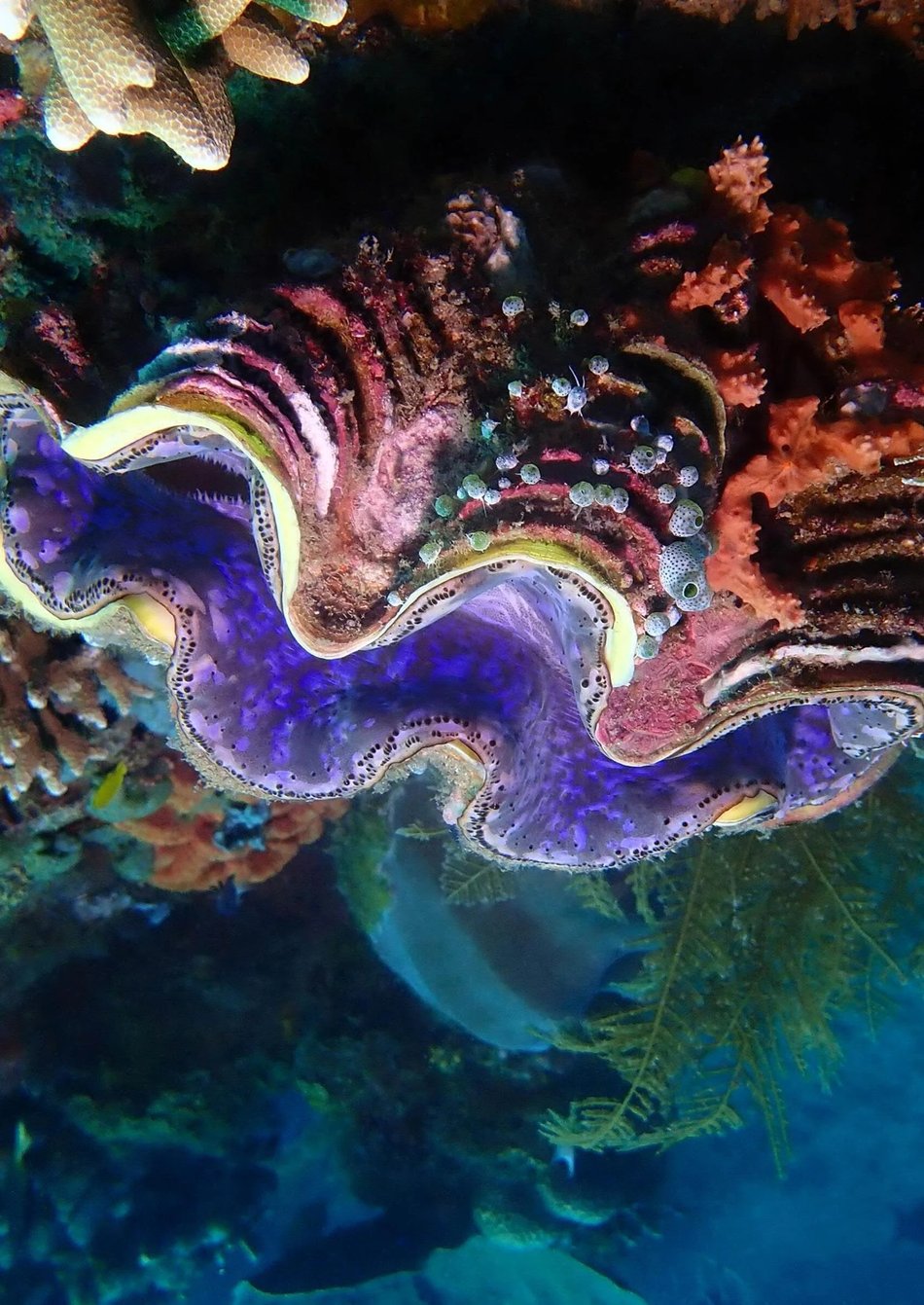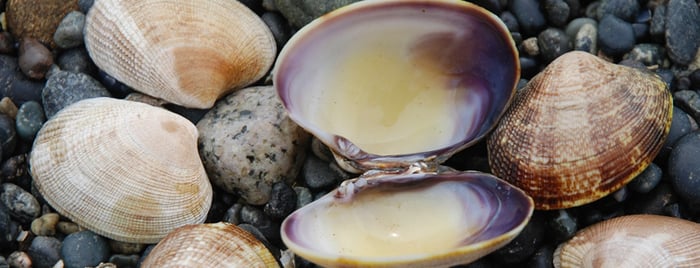Can giant clams remove carbon? Looking at examples from shellfish farming CO2 sinks



- "The Role of Shellfish Aquaculture in Carbon Sequestration"
This global study with contributions from researchers worldwide, authored principally by MW Beck, explores the potential of shellfish aquaculture, such as oysters, mussels, and clams, in carbon sequestration. It discusses how shellfish can effectively remove CO2 from seawater through their shell formation process, highlighting the environmental benefits of integrating shellfish farming into coastal ecosystems. This is a great source of information for what IMARCS is researching; however, it still fails to address the carbon-negative potential of individual shellfish organisms and their role in storing atmospheric carbon. - "Blue Carbon: Opportunities for Shellfish Aquaculture"
Another international study involving researchers from various institutions, led by CM Duarte, focuses on the increasingly well-known concept of blue carbon and its relevance to shellfish aquaculture. It explores the potential of shellfish farming to contribute to blue carbon sequestration and reduce CO2 levels in the atmosphere. The paper emphasizes the importance of coastal and marine ecosystems as a whole in capturing and storing carbon, with shellfish playing a significant role in this process. Similar to the paper mentioned above, this is another great source of information without providing the specific carbon-negative potential of calcifying organisms in the manner that IMARCS seeks to uncover. - "Enhancing Shellfish Aquaculture for Climate Resilience and Carbon Sequestration"
A collaborative study involving researchers from Canada, the United States, and Europe - led by R. Filgueira, T. Guyondet, and J. Grant - examines strategies to enhance shellfish aquaculture practices for improving climate resilience and maximizing carbon sequestration potential. It looks at various management techniques, species selection, and ecosystem-based approaches to optimize CO2 uptake and storage in shellfish farming systems. - "Carbon Footprint of Shellfish Aquaculture Systems"
Important meta-research conducted by RR Gentry and R Lardner, looking at various shellfish farming regions globally, assesses the carbon footprint associated with different shellfish farming systems, evaluating their potential for reducing greenhouse gas emissions. It provides insights into the environmental impacts of various farming practices and highlights the most sustainable approaches for minimizing CO2 emissions in shellfish aquaculture. However, it does not address the carbon storage potential of these systems in the way that IMARCS is seeking to understand. - "Integrated Multi-Trophic Aquaculture (IMTA) and Carbon Sequestration"
Lastly, this collaboration led by A. Neori, T. Chopin, and M. Troell, involves researchers from several countries, including Israel, Canada, and Sweden. Their paper explores the concept of Integrated Multi-Trophic Aquaculture (IMTA) and its potential for enhancing carbon sequestration. IMTA systems integrate the cultivation of multiple species, including shellfish, finfish, and seaweed, to create a balanced and sustainable ecosystem. Their study highlights how IMTA can utilize waste nutrients from other farming components to support shellfish growth and shell formation, thereby enhancing carbon capture and storage - but the question of whether this storage is truly carbon-negative is still up for debate.

Image Credits: https://ocean.org/blog/ocean-wise-explains-aquaculture-recommendations/
What the IMARCS Foundation is doing
In addition to the research outlined above, giant clams have also been explored - though not deeply - as potential carbon sinks due to their ability to incorporate dissolved CO2 from seawater into their shells. While giant clams have not been extensively studied in this context, the limited amount of research available suggests that their carbon sequestration potential could be harnessed to help mitigate climate change under the right circumstances. At IMARCS, we believe that we can achieve these circumstances by utilizing in-shore mariculture tanks and altering the water parameters to test if biomineralization - the process of converting calcium carbonate into shells - can be carbon-negative.
In seawater, or saline water in mariculture tanks, the availability of hydroxyl ions is typically very small, even if salinity, pH, and temperature are adjusted. Any CO2 that dissolves from the air quickly reacts with the available OH⁻ and the subsequent imbalance of H⁺ and OH⁻ results in creating carbonic acid (CO2 + H2O = H2CO3) - which is the main driver of ocean acidification, due to rising atmospheric CO2 levels. This reaction then makes the availability of OH⁻ even smaller, further driving acidification and limiting the growth of calcifying organisms such as giant clams. The only way to increase the uptake of CO2 in a way that would precipitate CaCO3 in a carbon-negative manner would be to add a significant amount of OH⁻ ions to create readily available bicarbonate. This would essentially make the water less acidic and more alkaline. Altering saline tank environments to contain higher concentrations of hydroxyl ions will increase the availability of carbonate, increase the uptake of carbon within giant clam shells, and should result in less CO2 being emitted from calcium carbonate precipitation, effectively showing that this process can be a carbon-negative mitigation strategy.
 Image Credits - https://zoomeboshi.com/2014/09/26/honolulu-aquariums-giant-clams/
Image Credits - https://zoomeboshi.com/2014/09/26/honolulu-aquariums-giant-clams/
In natural seawater, the dissolution of CO2 into HCO3- and CO3^2- typically occurs due to the relatively constant pH levels, though this can vary with salinity levels differing throughout the ocean. However, in controlled saline environments, such as mariculture tanks, it is feasible to adjust pH, temperature, and salinity to absorb more carbon dioxide. Increasing alkalinity can be done by dissolving minerals such as dolomite or basalt rocks into the water, adding calcium compounds, or through electrolysis of the saline H2O.
Alkalinizing the oceans is not only far beyond the scope of what the IMARCS Foundation proposes or intends to study, but it could also have far-reaching, unintended effects that need to be thoroughly investigated before any such actions are taken (if it is even possible to do on such a large scale, which it likely is not). The research conducted by IMARCS focuses solely on whether the effect of adding a large quantity of OH- ions to in-shore mariculture tanks can result in carbon being stored in the form of CaCO3 without the release of excess CO2, making this process carbon-negative and a viable form of carbon sequestration in the shells of giant clams.
If successful, this process could then be replicated in numerous mariculture facilities in any location in the world that would permit giant clam mariculture - and perhaps even with different calcifying organisms such as certain types of corals.

Further reading:
Featured Image credits - https://www.traffic.org/site/assets/files/21864/giant_clam_factsheet-r19_1.pdf
Feng, J.-C., Sun, L., & Yan, J. (2023). Carbon sequestration via shellfish farming: A potential negative emissions technology. Renewable and Sustainable Energy Reviews, Volume 171. https://doi.org/10.1016/j.rser.2022.113018
Beck, M. W., Brumbaugh, R. D., Airoldi, L., et al. (2011). The role of shellfish aquaculture in carbon sequestration. Journal of Shellfish Research, 30(1), 139-146.
Duarte, C. M., Losada, I. J., Hendriks, I. E., et al. (2013). Blue carbon: Opportunities for shellfish aquaculture. Aquaculture, 412-413, 202-209.
Filgueira, R., Guyondet, T., Grant, J., et al. (2016). Enhancing shellfish aquaculture for climate resilience and carbon sequestration. ICES Journal of Marine Science, 73(3), 633-642.
Gentry, R. R., Lardner, R., et al. (2017). Carbon footprint of shellfish aquaculture systems. Aquaculture Environment Interactions, 9, 409-420.
Neori, A., Chopin, T., Troell, M., et al. (2004). Integrated multi-trophic aquaculture (IMTA) and carbon sequestration. Aquaculture, 232(1-4), 585-595.